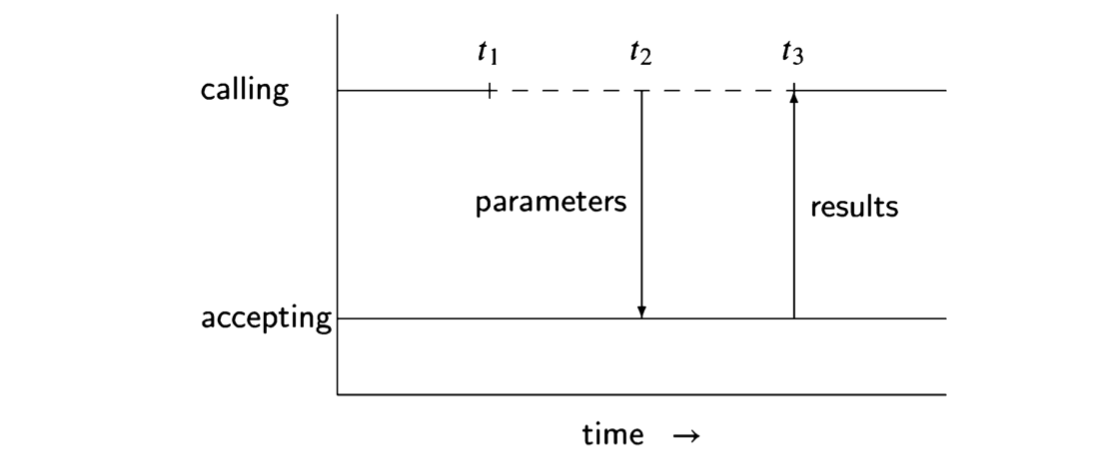Rendezvous
The name rendezvous invokes the image of two people who choose a place to meet; the first one to arrive must wait for the arrival of the second. In the metaphor, the two people are symmetric and the rendezvous place is neutral and passive. However, in the synchronization construct, the location of the rendezvous belongs to one of the processes, called the accepting process. The other process, the calling process, must know the identity of the accepting process and the identity of the rendezvous which is called an entry (the same term used in protected objects; see Section 7.10). The accepting process does not know and does not need to know the identity of the calling process, so the rendezvous is appropriate for implementing servers that export their services to all potential clients.

Algorithm 8.6 shows how a rendezvous is used to implement a client-server application. The client process calls the service entry of the server process supplying some parameters; it must now block until the server process is ready to accept the call. Then the rendezvous is performed using the parameters and possibly producing a result. Upon completion of the rendezvous, the result is returned to the client process. At the completion of the rendezvous, the client process is unblocked and the server process remains, of course, unblocked.
The semantics of a rendezvous are illustrated in the following diagram:

At time \(t_1\), the calling process is blocked pending acceptance of the call which occurs at \(t_2\). At this time the parameters are transferred to the accepting process. The execution of the statements of the accept block by the accepting process (the interval \(t_2–t_3\)) is called the execution of the rendezvous. At time \(t_3\), the rendezvous is complete, the results are returned to the calling process and both processes may continue executing. We leave it as an exercise to draw the timing diagram for the case where the accepting task tries to execute the accept statement before the calling task has called its entry.